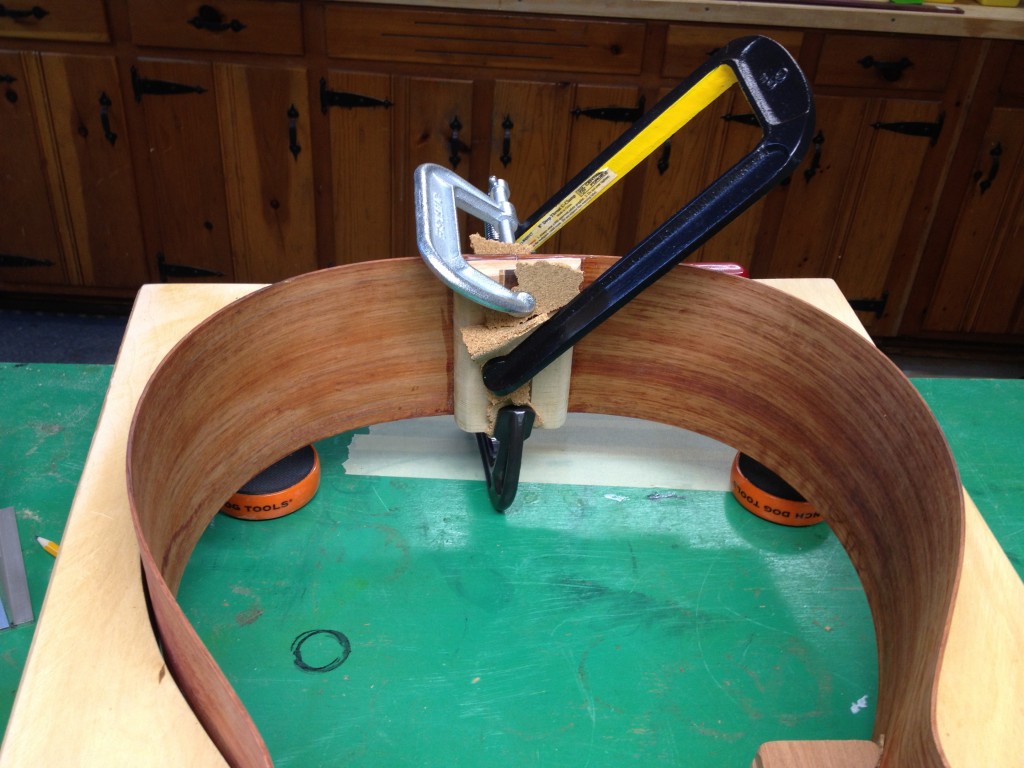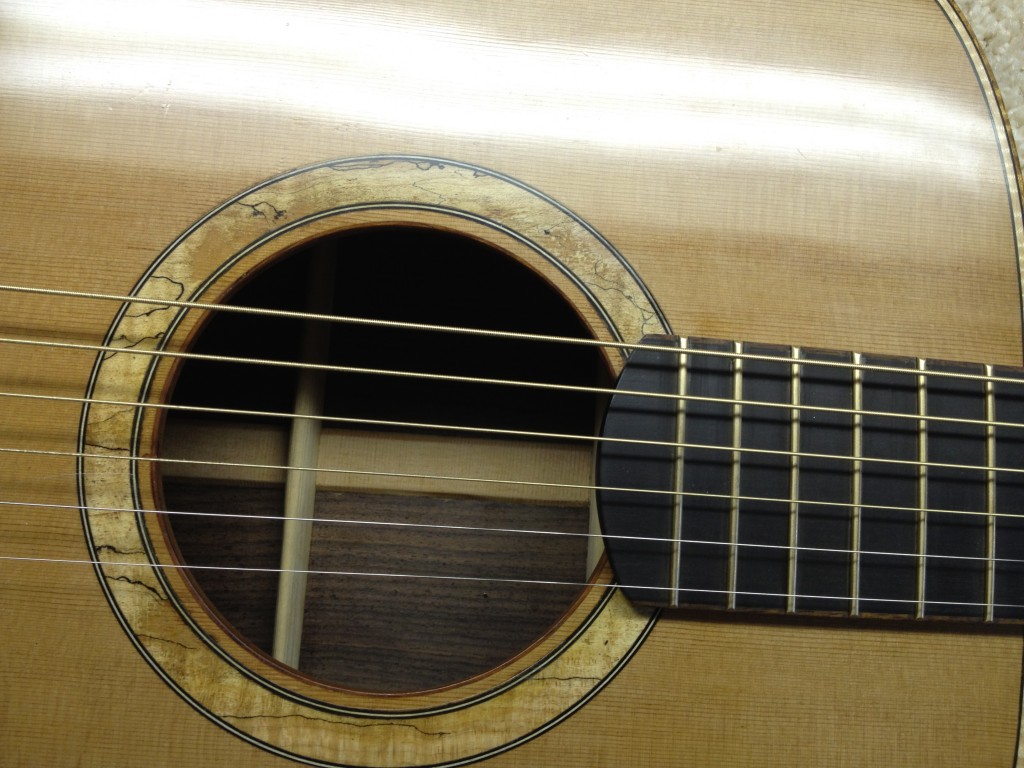So, this is the third guitar I’ve started for Whit. He’s the only person to whom I feel like I owe one of my home-made guitars. The only person who’s still alive and can wring every bit of tone from a nice guitar, I should say. He taught me a lot of what I know about guitars and music. And a bunch of other stuff. He’s been my favorite “guitar guy” since 1973 or so when we started the first of our several southern boogie bands — just a great guitar player.
And there’s more: one summer night, I think it was 1977, I backed my car over his new Takamine nylon-string guitar in its chipboard case and destroyed it. He laughed about it after a minute of shock and then and there gave me my first classical guitar. It never played again, but if it’s still up in my mom’s attic, I’ll pull it out next time I’m there and see if it’s repairable. We’ll never know, but this episode may have saved him from a life as a snooty conservatory player. Or a stint as some bandana’d troubadour with a big mouthful of vowels in this name and a gig selling cheap guitars at the Home Shopping Network. Every tragedy has waves of influence in this world. Not all of them bad.
I. The first failed Whit guitar was an OM with an oustanding western red cedar top and fine quality East Indian rosewood back and sides. It would be a beautiful combination of my best woods and trimmings. But those particular pieces of lovely wood really didn’t want to become a guitar, at least not Whit’s guitar; everything went together wrong. It was hard. This shouldn’t be hard stuff. When my router bit fell apart while routing the top binding and skittered across the top, I put this one away. My daughter suggested I finish it and give it to her friend Gaby. Gaby had a really bad guitar. So I patched the top and made a neck and didn’t worry so much about “who it’s for” from then on. Of course it got easier almost immediately. Now Gaby has a guitar that is perfect for her to grow into. It came out okay and has a nice overtone component, notwithstanding the cosmetic issues. And I finally got the neck geometry perfect. Thanks Hesh! But it’s not good enough for Whit. Besides the rosette sand-throughs, the top patch, and the not-long-enough koa backstrap, it really lacks substantial bass. And a guitar for someone of Whit’s caliber has to have an authoritative bass. No excuses.
II. The second guitar was started in May of this year — 2012 — and was to be African padouk beneath a redwood top. This padouk wood is orangey-red and rings really nice. The best sounding wood I have. Very much like a good rosewood. The redwood is reputed to have a tone staking out the ground between cedar, with its dark, overtone-rich sound, and sitka spruce, with the bright sound of the fundamental note. Rich harmonic content is a goal. As is a nice reverby sustain. These choices should do it.

Should have turned it over to check the alignment. That spruce tail block has been a part of all three guitars.
So the top got glued up and the sides got sanded and bent. But I glued the tail block in crooked and tried to pry it apart. The sides got some awful cracks due to my enthusiastic chiseling. The glue won. Should have just steamed it apart, but that chisel was right there and it was so sharp… Scratch number two. Into the stove box. The photo at the top of this page tells the whole story. If you are seeing this on the main page and have a photo of a major glue-up at the top of the page, I’m referring to this photo below:
III. So here we are in August of 2012 and I’m feeling motivated and challenged anew. Here’s some wood and there’s some glue. Let’s make Whit a guitar.


